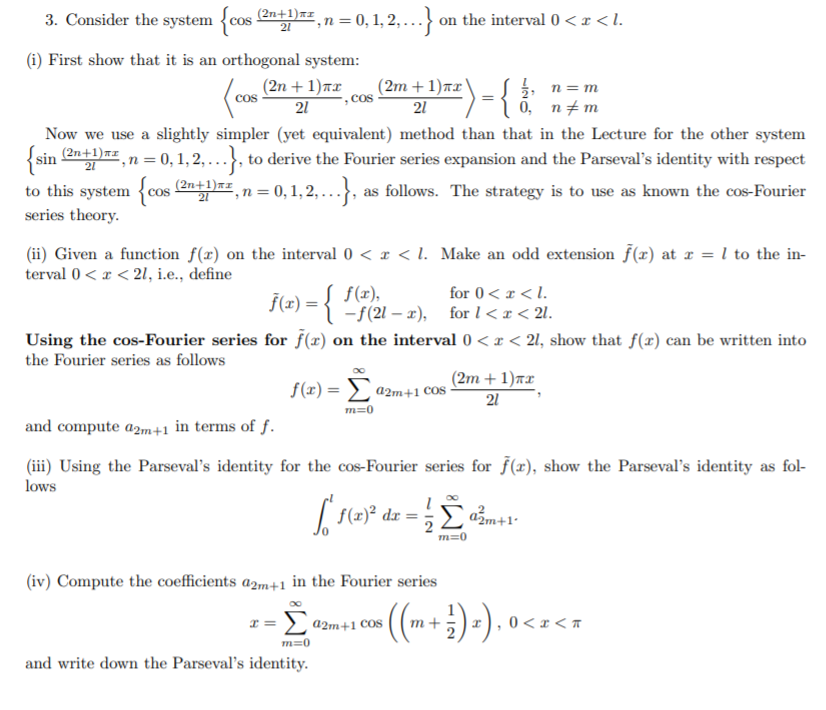Question
Consider the system n cos (2n+1)x 2l , n = 0, 1, 2, . . .o on the interval 0 < x < l. (i)
Consider the system n cos (2n+1)x 2l , n = 0, 1, 2, . . .o on the interval 0 < x < l. (i) First show that it is an orthogonal system: cos (2n + 1)x 2l , cos (2m + 1)x 2l = l 2 , n = m 0, n 6= m n Now we use a slightly simpler (yet equivalent) method than that in the Lecture for the other system sin (2n+1)x 2l , n = 0, 1, 2, . . .o , to derive the Fourier series expansion and the Parsevals identity with respect to this system n cos (2n+1)x 2l , n = 0, 1, 2, . . .o , as follows. The strategy is to use as known the cos-Fourier series theory. (ii) Given a function f(x) on the interval 0 < x < l. Make an odd extension f(x) at x = l to the interval 0 < x < 2l, i.e., define f(x) = f(x), for 0 < x < l. f(2l x), for l < x < 2l. Using the cos-Fourier series for f(x) on the interval 0 < x < 2l, show that f(x) can be written into the Fourier series as follows f(x) = X m=0 a2m+1 cos (2m + 1)x 2l , and compute a2m+1 in terms of f. (iii) Using the Parsevals identity for the cos-Fourier series for f(x), show the Parsevals identity as follows Z l 0 f(x) 2 dx = l 2 X m=0 a 2 2m+1. (iv) Compute the coefficients a2m+1 in the Fourier series x = X m=0 a2m+1 cos m + 1 2 x , 0 < x < and write down the Parsevals identity
Step by Step Solution
There are 3 Steps involved in it
Step: 1

Get Instant Access to Expert-Tailored Solutions
See step-by-step solutions with expert insights and AI powered tools for academic success
Step: 2

Step: 3

Ace Your Homework with AI
Get the answers you need in no time with our AI-driven, step-by-step assistance
Get Started



